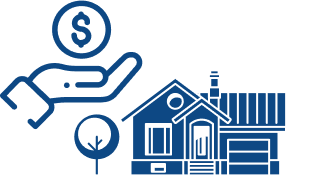US Real Estate Market: Second Quarter Roundabout
October 5th, 2023 / Author: Zachariah PetersonIf the first two years of the pandemic marked a heating period for the housing market, this year is all about the cool-down, especially the last three months. We can see the cracks in the prices, the peaks of inflation, and the spiraling rates all in six weeks ending June. What was happening in the housing market for the last quarter and what can we expect next?
Looking at it long-term, the housing market is still very hot, but in the short-term, there was so much volatility and downward movements that it’s starting to look like a proper cool-off. The prices are rising - in some parts of the country even rose more than 50% year-over-year, and the mortgage rates are rising - and home buying just got even harder for regular buyers.
However, rising rates are promising a new future for the housing market - one, with a smaller supply-demand gap and fewer overvalued properties.
Reset Instead of a Recess
In the midst of rising prices parallelly with mortgage rates, people started talking more about the 2008 recession. However, the Fed’s prediction is not just as pessimistic and there is faith in the US housing market. What some want to compare with the recession, the Fed calls a reset.
The rising rates are a tool to achieve a balance between supply and demand. High demand during the pandemic created a butterfly effect and caused not only high prices of houses, but also condos, rents, and homebuilding. The rising rates are a tool to achieve a balance between supply and demand. High demand during the pandemic created a butterfly effect and caused not only high prices of houses, but also condos, rents, and homebuilding.
To put a stop to these skyrocketing housing prices, the Fed wants to put pressure on buyers and demotivate them to continue this buyer frenzy. Their lack of interest will prevent sellers from feeling like they can easily overvalue their property and even expect more than the asking price.
This is already happening, with the mortgage rate staying close to 6%, we can see cracks in the properties’ prices and time spent on the market. Not to mention that Redfin’s reports show a significant decrease in demand, represented by drops in Google searches, mortgage applications, and tour requests.
Was the Second Quarter a Good Time to Buy?
Second-quarter followed upward trends that weren’t favorable to buyers. May and June's numbers show that 55% of all home sales ended in bidding wars and median house prices rose above $400,000. These conditions, together with the 6% mortgage rate referred to the drop in sales.
Sales did see a drop, but real estate agents are talking about how this is not a bad time to buy. This moment in time is when the buyer can make the conditions and negotiate the price. Locking in the rates is only temporary until the market comes to a balance, and people can refinance.
What the Fed is targeting aren’t the regular buyers, but rather residential investors who usually buy to rent. However, it seems that there is a long way to go until things get to a new normal, and the rates can go down. Since February, the median monthly mortgage payment rose from $1,100 to $1,900 - a steep upward trend that’s not going to stop until there is more inventory.
The first corrections are visible in the most overvalued markets in the Sun Belt states. This reset is going to be noticeable throughout the country once the rates and prices get so high, that it becomes severely unsustainable for the buyers.
SELL
YOUR HOUSE
If you want to sell fast and are worried about how long the traditional process takes, and the commission and fees involved, consider working with SleeveUp Homes.





 view all blogs by this author
view all blogs by this author Cesar Gomez (85 blogs)
Cesar Gomez (85 blogs)